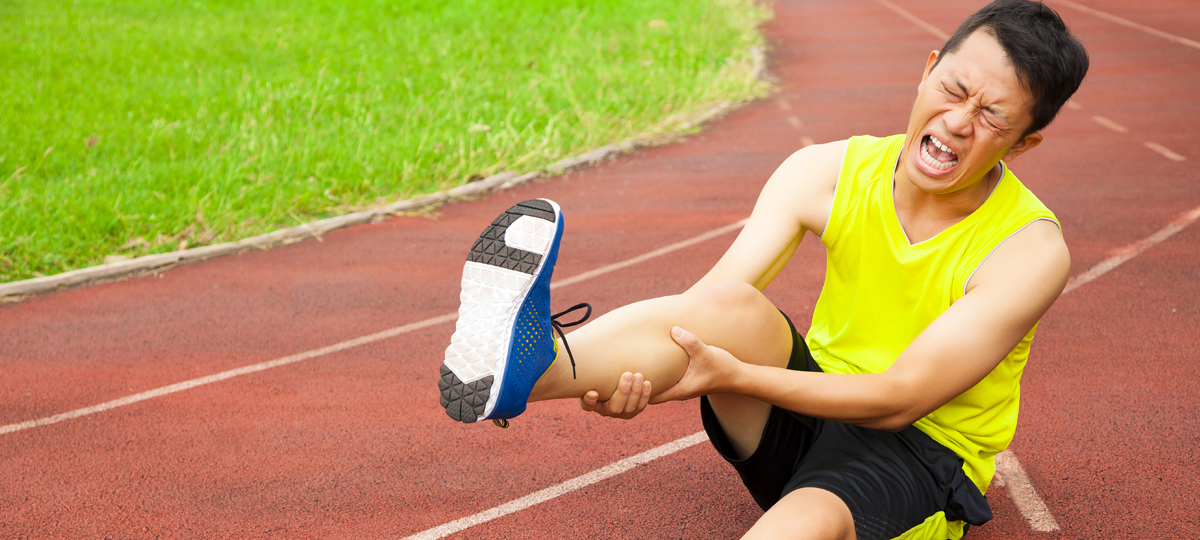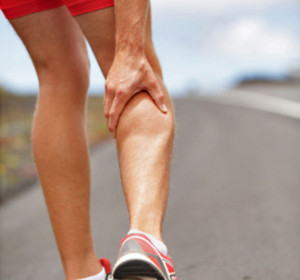Do you cramp when you run?
Mark Green

Almost every endurance runner has experienced cramp at some time during or after a run. It seems to happen more frequently during races than it does in training. Sometimes it is mild and you can keep running through it, sometimes it is severe enough to force you to stop and try to stretch it out. Regardless of the severity, it isn’t pleasant and it slows you down. How can you stop it from happening?
What is cramp?
Cramp is an uncontrollable and painful muscle spasm. It is usually felt as a sudden seizing up of a muscle, and it ranges in severity from relatively mild tension, to excruciating pain.
Why does it occur?
Unfortunately, there isn’t a black and white answer to this question. Scientists have theories, but it is hard to do research on cramps because they are spontaneous and unpredictable.
The two most common theories as to what causes cramp are:
- Dehydration and electrolyte loss
- Muscle fatigue
Dehydration and Electrolyte Loss:
The best-known theory is also the one with the least amount of scientific support. Timothy Noakes, M.D., Ph.D., D.Sc., a renowned exercise scientist from the University of Cape Town, calls the studies that link cramps to sodium loss and dehydration “bogus science.” In 2004, he studied the electrolyte levels of 43 ultra marathon runners. Blood tests after a race showed no significant differences in blood sodium or magnesium concentrations between those who had and hadn’t cramped. There were also no differences in body weight, plasma volume, or blood volume between the two groups, showing that dehydration had no real effect.
If dehydration alone could cause a muscle cramp then in theory you could seize up in saunas or hot tubs, or even just walking around on hot days.
Muscle Fatigue:
Dehydration, however, could expedite muscle fatigue, which is the most likely cause of cramps. In that same ultra marathon runner study, 100 percent of the runners who cramped did so in either the last half of, or right after the race. Anecdotally, this theory holds up: Most people who cramp seem to be covering longer distances; cramps seem more common at mile 20 of a marathon than, say, mile two of a 5K.
What can you do to prevent cramp?
Despite the debate on the causes of cramp, experts generally do agree on several steps you can take to reduce your cramping risk.
Here are five strategies you can try:
- Stretch Regularly – Create a routine of regular gentle stretching to help keep your muscles generally more flexible and relaxed. Pay particular attention to the muscles that are most prone to cramping, like calf muscles and quads.
- Train appropriately for your specific event. On race day, running much faster or farther than you’ve trained will fatigue your muscles and make you susceptible to cramps. Racing on different terrain than you have been training on will also increase the likelihood of cramping because it will put your muscles under different load, causing them to fatigue quicker. Find out as much as you can about the course you will be racing on, and replicate it in training. This is just as relevant for a flat and fast half marathon course as it is for a hilly ultra marathon.
- Prepare your body for the elements. If you live in a dry climate, for example, don’t decide to run a marathon in an extremely humid city, unless you give yourself ample time before the race to become accustomed to the steamy conditions. This can take up to a week or more. A race at the start of summer on a hot day, when you’ve been used to training in relatively cooler conditions also seems to bring cramp on sooner. This is virtually impossible to prepare your body for, so you need to make sure you’ve ticked all the other boxes to reduce your likelihood of cramping.
- Drink some electrolytes. Although scientific studies suggests that dehydration does not contribute to cramping, it is still important to stay well hydrated when you run. Drinking some electrolyte drinks in the days leading up to your race will help to keep you hydrated. Look for products that aren’t full of preservatives and sugar.
- Introduce some plyometric (jumping) exercises. Plyometric exercises help to improve muscle-nerve coordination and muscle strength which should help to reduce the chances of cramping.
What if the horse has already bolted? What can you do to relieve cramp mid-race?
Again this is an inexact science, but there are some things you can try to relieve cramp when it happens.
- Stop and Stretch – This happens by default if your cramp is severe. If you are running and your calf muscle literally locks up, then you will need to stop and try to stretch it out. Ease slowly into the stretch and the muscle will gradually lengthen and relax again. You might have to do this several times during the rest of the run to keep it at bay.
- Massage it – Dig your fingers or fist into the tight muscle to try and help it relax. Again, this is a strategy you might have to use several times to keep the cramp at bay.
- Change your stride – Given the most likely cause of cramp is muscle fatigue, then changing the way you are moving can help to “switch it off” – change the width of your stride, or your cadence, or even your stride length for 30 seconds and see if that helps. Even though we strive for “perfect” technique all of the time, if you are mid race and your legs are cramping, you need to employ any strategies you can to relieve it.
- Try some walk/run intervals – This is another way to mix up your stride and the forces you are applying to your muscles. You might find that you can run 200m and walk 50m and keep the cramp at bay. Over the next few hundred metres you might then find that your muscles have relaxed enough to sustain longer and longer periods of running.
- Chew on something salty – Swallowing salt won’t fix your blood sodium levels — but chewing on something salty can trigger a nerve response that “tells” your brain you’ve got enough sodium in your system which should help your muscles to relax.
Try this if you get hit by the cramp monster:- Chew 5–6 salt tablets and hold them in your mouth for 2–3 minutes (yep, it’s salty and will taste disgusting).
- Rinse your mouth and swallow the salt
- Repeat if cramp returns as many times as is necessary to get you to the finish line.
